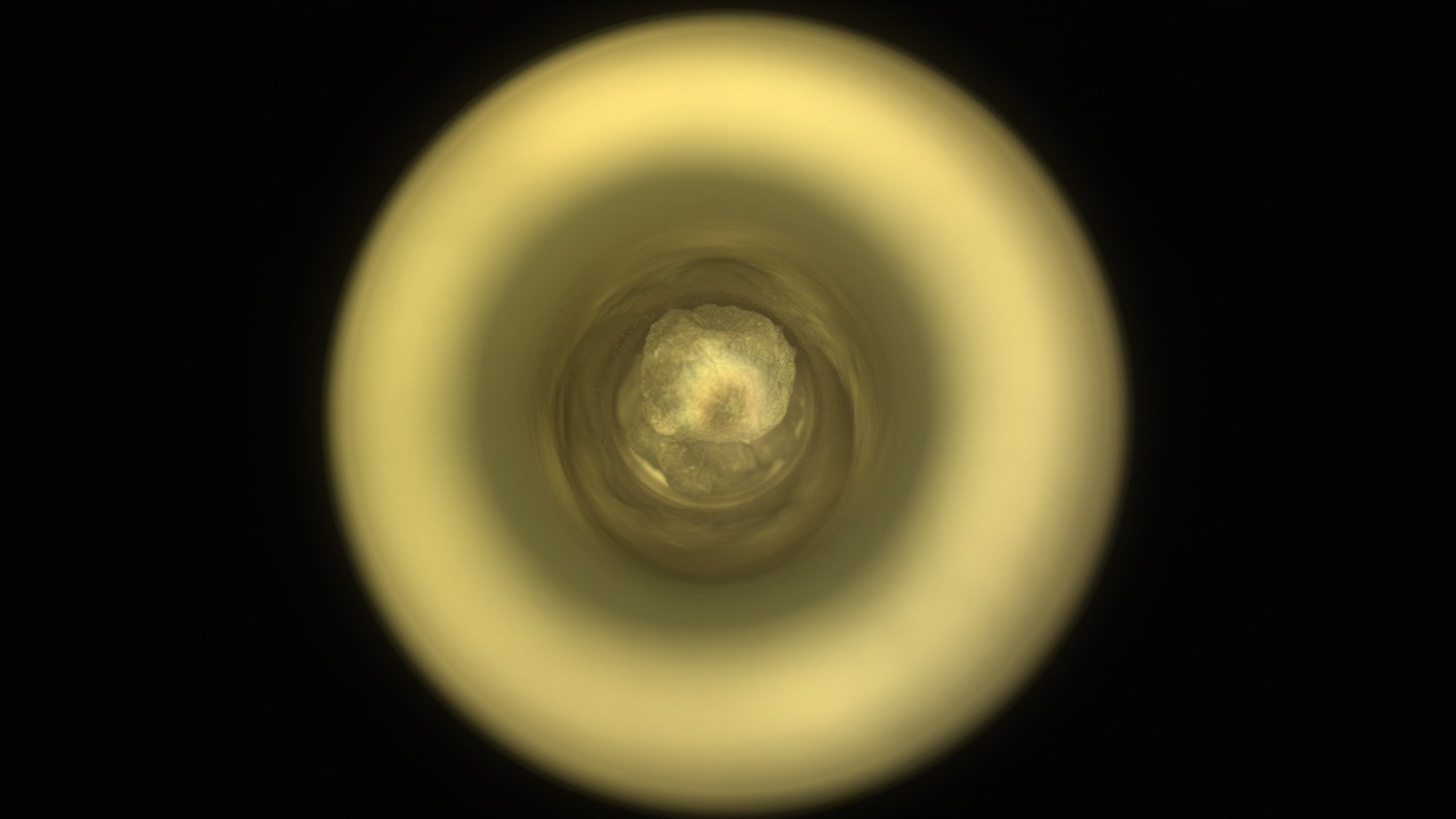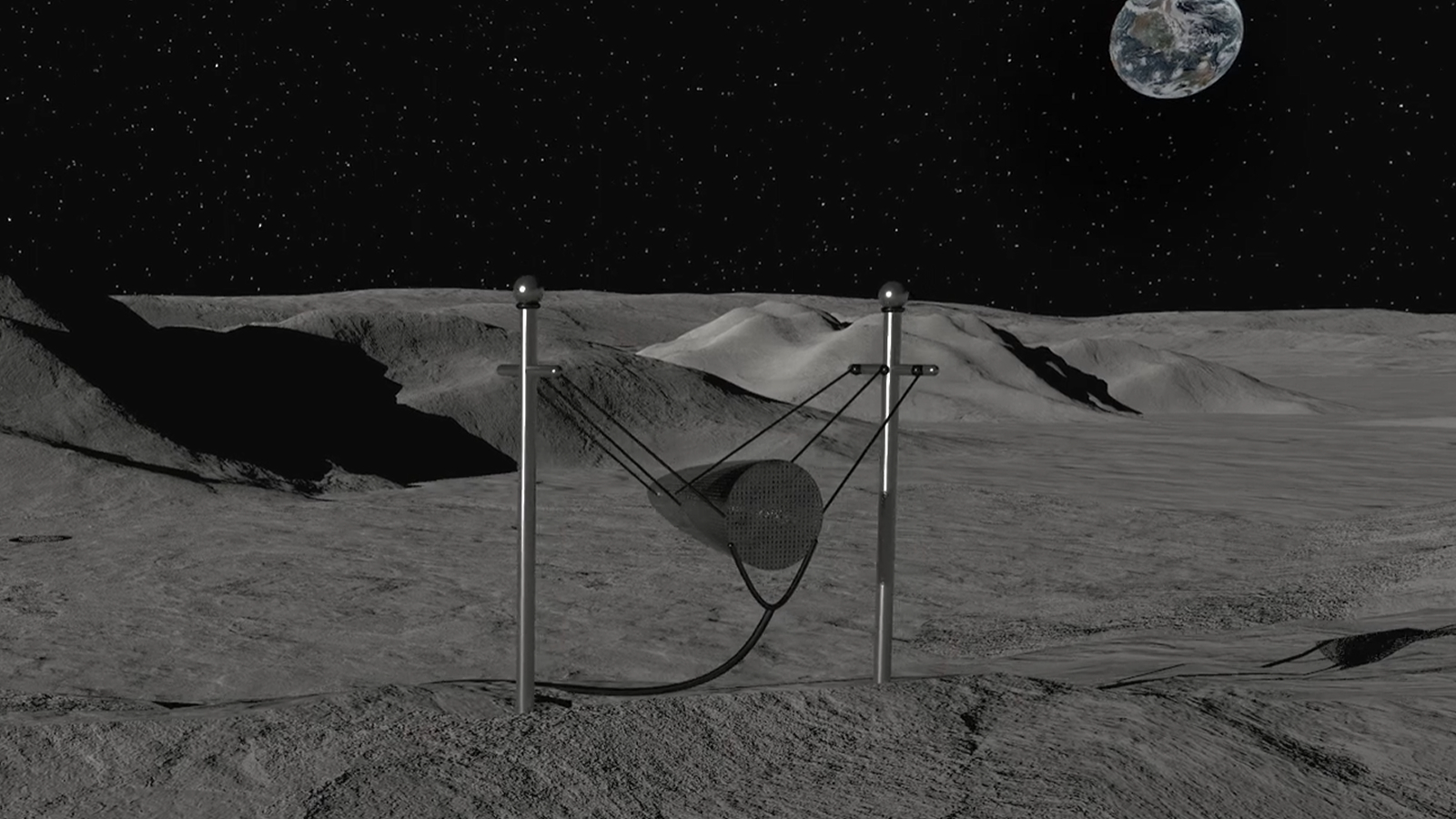Perseverance Mars rover finds 'one-of-a-kind treasure' on Red Planet's Silver Mountain
The rover's 26th sample, known as "Silver Mountain," has textures "unlike anything we've seen before," NASA says.

The Perseverance Mars rover has collected a rock sample on Mars unlike any other it has picked up so far.
NASA's Perseverance rover is currently exploring hills and rocky outcrops along the rim of Jezero Crater, where it has been collecting rock samples to reveal the area's geological history. This week, NASA announced that the robotic explorer picked up a "one-of-a-kind treasure" in the form of a 1.1-inch (2.9-centimeter) rock sample from an area known as "Silver Mountain."
"My 26th sample, known as 'Silver Mountain,' has textures unlike anything we've seen before," the rover's official X account posted along with a photo of the sample.
The rocks in this area are of immense scientific interest as they could offer a "rare window into Mars' deep past," NASA wrote in the statement.
The rocks in Perseverance's current area are believed to have been thrust up to the Red Planet surface from deep inside the planet after an ancient impact billions of years ago.
These rocks are believed to be pieces of the early Martian crust, and could be "among the oldest rocks found anywhere in the solar system," NASA's Jet Propulsion Laboratory wrote in a statement. Studying them could help us understand what Mars and even Earth were like early in our solar system's formation.
NASA says this is the first sample from the Noachian age, a period of Mars' geological history around 4 billion years ago marked by frequent asteroid and comet impacts that shaped many of the craters will still see on the Red Planet today.
Get the Space.com Newsletter
Breaking space news, the latest updates on rocket launches, skywatching events and more!

Perseverance landed on Mars in 2021 near Jezero Crater with several objectives in mind: scour the area for possible signs of ancient life, collect rock samples like "Silver Mountain" for an eventual return to Earth for study, and to test new exploration technologies.
One of those technologies was the plucky Ingenuity helicopter, a robotic flyer that was designed to make five test flights. It ended up taking to the Red Planet skies a total of 72 times before it suffered rotor damage, ending its mission.
Over the course of its four years on Mars, Perseverance has discovered rocks that show possible chemical evidence of having interacted with water at some point in their geological history. Water, at least on Earth, is essential for life.
While scientists are eager to return this and other samples to Earth so that they can be studied in-depth, the fate of the Mars Sample Return program is still unknown due to rising costs and mission complexity.
After cost projections rose to $11 billion and the sample return timeline was extended to no earlier than 2040, NASA began overhauling the plan entirely and has since sought new proposals from industry and academia. The agency will decide on a new strategy in 2026.
China, meanwhile, is aiming to launch its own Mars sample return mission in 2028, which would potentially have samples back on Earth by 2031.
Join our Space Forums to keep talking space on the latest missions, night sky and more! And if you have a news tip, correction or comment, let us know at: community@space.com.

Brett is curious about emerging aerospace technologies, alternative launch concepts, military space developments and uncrewed aircraft systems. Brett's work has appeared on Scientific American, The War Zone, Popular Science, the History Channel, Science Discovery and more. Brett has English degrees from Clemson University and the University of North Carolina at Charlotte. In his free time, Brett enjoys skywatching throughout the dark skies of the Appalachian mountains.
-
BT2024 If SpaceX launches a Starship in 2026 or 2028 for an uncrewed or crewed Mars landing, seems like a great opportunity to send ridealong technology to collect the samples and return them to Earth.Reply -
Unclear Engineer My understanding of the problem is that it would take something like the mass of a StarShip payload landing on the Mars surface to provide for both a rover to collect the samples and a launch-to-Mars-orbit craft with enough fuel.Reply
But, then there is still the return to Earth part of the journey to get the samples from Mars orbit to Earth reentry. I'm not sure if one StarShip could provide both.
The major holdup seems to be that NASA has been trying to figure out how to do it with very much smaller spacecraft, due to budget concerns.
The early SpaceX missions to Mars have an entirely different focus, and don't have the available payload mass for sample return ride-alongs, so those NASA missions would probably be paid for as whole once-and-done StarShip missions. Still not likely to fit NASA's budget. SpaceX earliest StarShip launches to Mars are apparently expected to be one-way, probably filled with robots and habitat manufacturing equipment for them to assemble and operate on Mars without humans present. -
ChrisA Reply
Yes. Starship just might have enough capability to take an actual payload to Mars. It would be harder to land with the added weight and then you need the added weight and complexity of a door and a crane or elevator. All this adds engineering hours, testing hours and cost and or course "mass".BT2024 said:If SpaceX launches a Starship in 2026 or 2028 for an uncrewed or crewed Mars landing, seems like a great opportunity to send ridealong technology to collect the samples and return them to Earth.
But let's say they did this. It would still cost "many billions" because transportation to Mars has not in the past ben the major cost of a mission to mars. I think the current rover mission cost about $4B but the launch cost was about $250M. So getting to Mars was only 1/16th of the total cost.
So what is inside the ridealong payload (aside from the door and crane needed to extract it?). It would need to be a mobile rover, have some self driving ability and a reliable robot arm for fetching the samples and then,... A large rocket is needed to fly the samples to orbit. But then what? It needs to transfer those samples to an Earth return vehicle
This is the problem with Starship. It only addresses the lowest cost part of the mission. The payloads typically cost 10X the launch cost so even if you make launching to Mars free you only get a 10% reduction in mission cost.
The mobile robot with the arm and the ascent rocket and the obitor that waits above Mars together cost MUCH more than Starship. -
ChrisA Reply
Can a 2026 version of Starship land with any payload mass, or would the ship have to be empty? If we wait some years we will have a more capable Starship with three more engines and larger fuel tanks. Then there is the problem that a rover and ascent vehicle would not be ready so soon.Unclear Engineer said:My understanding of the problem is that it would take something like the mass of a StarShip payload landing on the Mars surface to provide for both a rover to collect the samples and a launch-to-Mars orbit craft with enough fuel.
But, then there is still the return to Earth part of the journey to get the samples from Mars orbit to Earth reentry. I'm not sure if one StarShip could provide both.
The major holdup seems to be that NASA has been trying to figure out how to do it with very much smaller spacecraft, due to budget concerns.
The early SpaceX missions to Mars have an entirely different focus, and don't have the available payload mass for sample return ride-alongs, so those NASA missions would probably be paid for as whole once-and-done StarShip missions. Still not likely to fit NASA's budget. SpaceX earliest StarShip launches to Mars are apparently expected to be one-way, probably filled with robots and habitat manufacturing equipment for them to assemble and operate on Mars without humans present. -
Unclear Engineer I think NASA was getting out to 2040 for the return mission, without any StarShip involvement, anyway.Reply
We have been terrible at predicting technological advancement rates in the past, so what StarShip is capable of doing at various points in the future isn't really a good planning basis. (Think about the technologies that the movies "2001" and "2010" showed, compared to where we really are in 2025, not to mention Musk's proclivity for making unrealistic schedule statements.)
When we say "StarShip" these days, we tend to think of the current upper stage of the SpaceX megarocket. But, there is really no reason that other upper stages could not be developed for various tasks. I expect that the SuperHeavy first stage would be able to put a Mars lander with a return stage on the Martian surface, if someone wants to pay to do that. That is an entirely different proposition from having a single StarShip of current design fly the same mission. The use of multi-staging is actually the "proven" technology for such missions to the Moon, including the Apollo and Chinese missions with returns. -
skynr13 Reply
The ESA is responsible for returning the samples and have their craft ready to do that once they are supplied to orbit.Unclear Engineer said:My understanding of the problem is that it would take something like the mass of a StarShip payload landing on the Mars surface to provide for both a rover to collect the samples and a launch-to-Mars-orbit craft with enough fuel.
But, then there is still the return to Earth part of the journey to get the samples from Mars orbit to Earth reentry. I'm not sure if one StarShip could provide both.
The major holdup seems to be that NASA has been trying to figure out how to do it with very much smaller spacecraft, due to budget concerns.
The early SpaceX missions to Mars have an entirely different focus, and don't have the available payload mass for sample return ride-alongs, so those NASA missions would probably be paid for as whole once-and-done StarShip missions. Still not likely to fit NASA's budget. SpaceX earliest StarShip launches to Mars are apparently expected to be one-way, probably filled with robots and habitat manufacturing equipment for them to assemble and operate on Mars without humans present.
